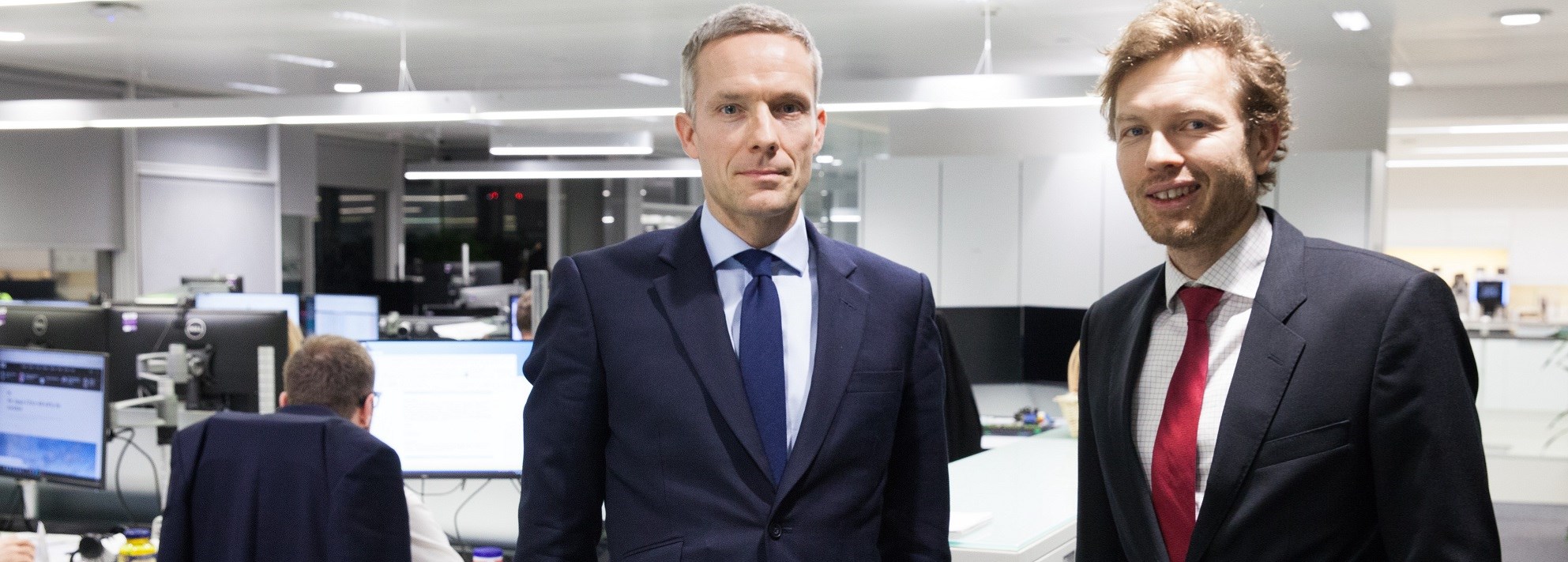
A serious billion-dollar responsibility
The Government Pension Fund Global has to grow in order to benefit future generations. ‘That’s a responsibility you really feel. It’s "live" the whole time,’ says Chief Investment Officer Equity Strategies Petter Johnsen.
‘You probably can take some pictures that way and some this way.’
Head of Communication and External Relations Thomas Sevang does not want the English photographer to take pictures of the computer screens. Figures relating to the world’s biggest fund must not be made public. They are for the London office's 150 employees' eyes only.
Near Regent Street
They are hard at work in a big open office landscape, following up the companies they are responsible for and staring intently at the numbers to determine the companies’ future revenues. Norges Bank Investment Management (NBIM), which manages the Government Pension Fund Global, makes investments worldwide. It invests in equities, bonds – and real estate, which has attracted much of the attention.
Many Norwegians are familiar with the fact that the Fund has bought real estate in both Oxford Street and Regent Street. Today, the Fund’s investments comprise 65.9 per cent in equities. 31.6 per cent in bonds and 2.5 per cent in unlisted property.
One of the London properties acquired by the Fund is Queensberry House, and it is here that the London-based financial experts are located. It’s only a three-minute walk to Regent Street, surrounded by fancy lunch restaurants and exclusive shops.
Trillion-dollar barrier
‘There are employees from 21 different countries here,’ Sevang explains.
And quite a few women, I see?
‘Yes, around 29 per cent of the Fund’s employees are women. This figure could be higher, and it is a challenge experienced by the finance industry as a whole. It is gradually improving.’
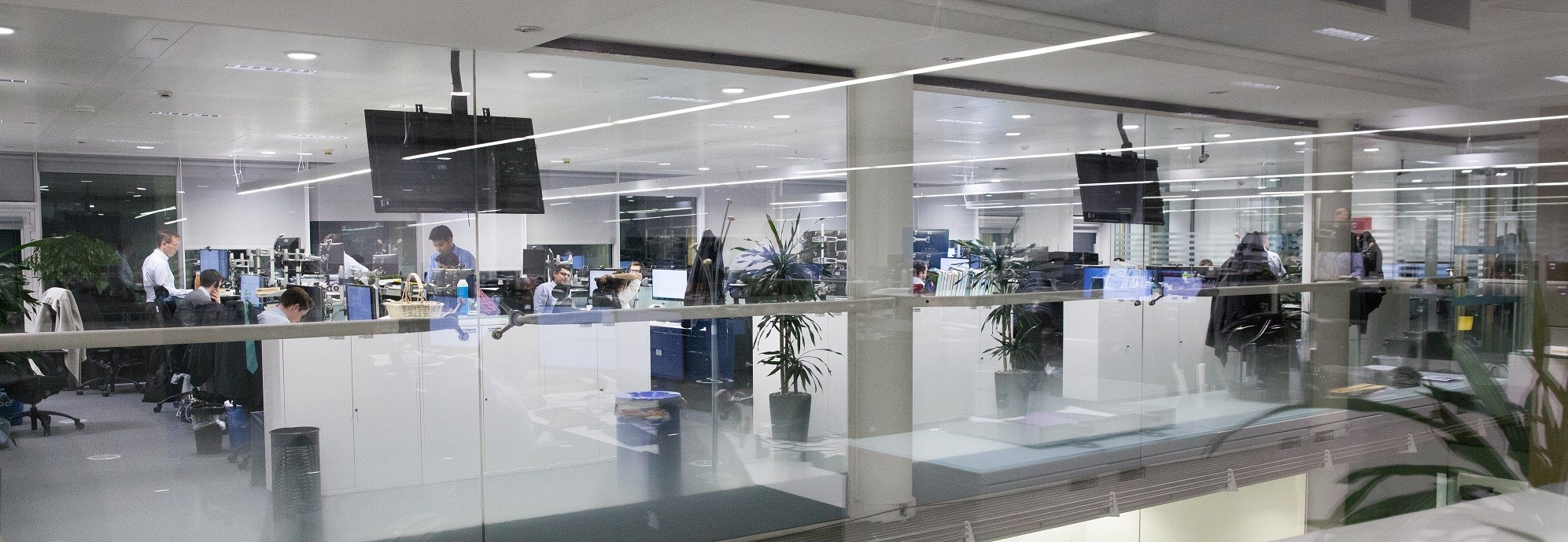
At an international workplace such as the Government Pension Fund Global, different holidays and festivals are also celebrated. What is left of the Thanksgiving cakes are on the table in the coffee area next to the large open-plan office. No one is speaking loudly or wandering around between the computers.
‘It’s fairly quiet here, as you can hear,’ says Sevang.
It’s possible the mood was more excited on Tuesday 19 September, when the Fund broke the trillion-dollar barrier for the first time in its 21-year history. The story of ‘Norway´s trillion-dollar wealth fund’ went global. However, fund managers and number crunchers in London are sober-minded people when at work.
It’s half past four in the afternoon and it appears that most of them are still working on the Norwegian money pot.
This probably includes some of the 63 NHH graduates who work for the Fund, some of them in the London office.
Natural hub
The Government Pension Fund Global has offices in Oslo, Singapore, New York, Shanghai and London.
‘The London office is a natural hub for the Fund,’ says Sevang.
Sevang started working for the Fund in 2013, after working for a few years as director of communications in Nordea Norge. His ordinary place of work is Oslo. Of the six people in the communications section, three have studied at NHH.
‘Shall we go and see Petter? He’s in the office,’ says Sevang.
He shows us the way to the end of the open-plan office. Petter Johnsen, who graduated from NHH in 1999 – whose father is professor of finance and one of NHH’s grand old men, Thore Johnsen – greets us with his clear Bergen dialect. Faces look up from their screens to see what’s happening. The Fund does not often allow photographers in.
CIO for Equities since 2011
Petter Johnsen became CIO Equity Strategies in 2014, after working as CIO for Equities since 2011. He joined NBIM as a portfolio manager in 2003. Before the NBIM period, he worked in Merrill Lynch and in Morgan Stanley in London.
Johnsen’s domain is the selection of equities.
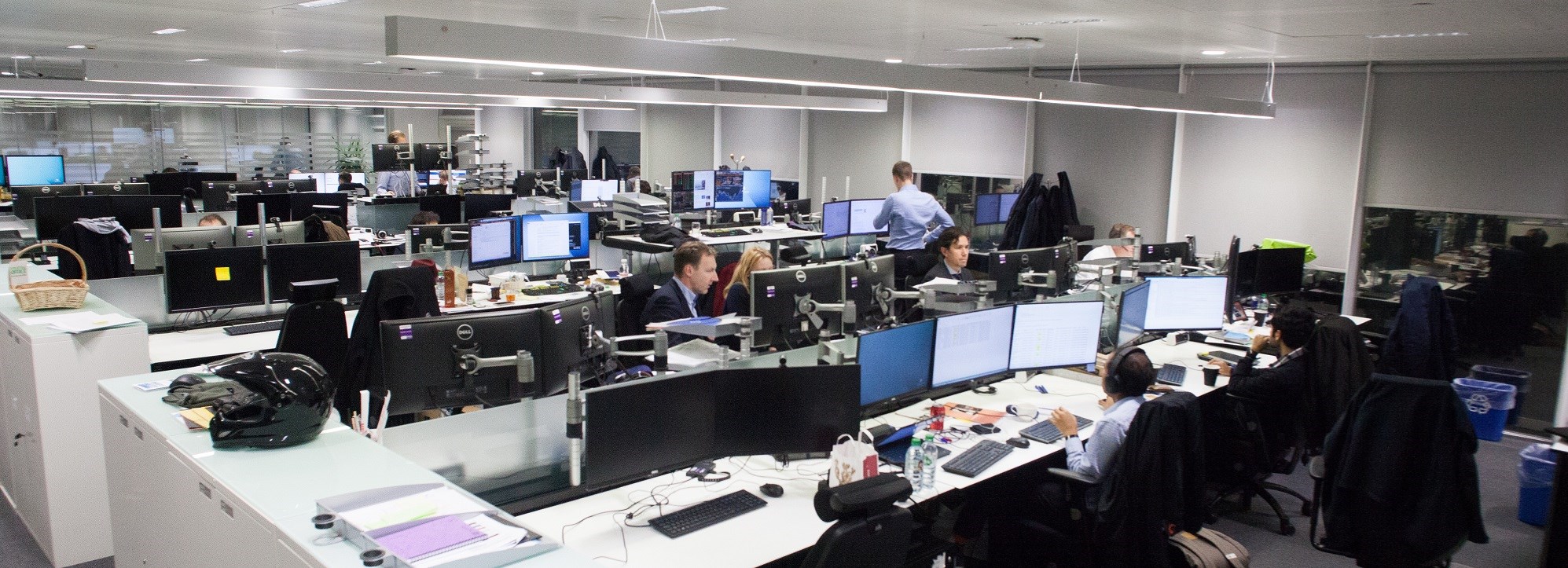
‘It’s about relating to companies and building company-specific knowledge, and making investments based on this information. Hopefully good investments. The division of work at the different offices is also influenced by this. The London office and the other offices abroad work on company-specific investments and work. This is why more than half the office here is working in my domain. There are about 150 of us here in London, and just over 40 work on real estate and just over 100 on NBIM.’
Three main strategies
Johnsen underlines the clear division of responsibility and roles between the Storting, the Ministry of Finance, Norges Bank’s board of directors and those who are ultimately tasked with making the right decisions and ensuring that more billions are added to the Global Pension Fund.
‘The Storting decides the basis of the investment strategy. The Ministry of Finance and the bank’s board of directors give us a mandate based on that. Much is defined under this mandate – what the investment universe is and how much we can deviate from it,’ says Johnsen.
To achieve the highest possible returns within this framework, the Fund has three main strategies. Aside from Johnsen’s field, the selection of equities, there are what is known as allocation strategies – overriding adaptation and distribution of the portfolio. The other main strategy area is asset management, which concerns how the fund translates their strategies into the action expected to give the best possible returns.
4,000 company meetings
What’s a normal day at work like here in London?
‘We often meet different companies here in our offices, since our work relies on us knowing a lot about companies. Many senior executives often stop by to meet our managers in the course of a day,’ says Johnsen.
‘We had 4,000 company meetings last year. Most of these were at or based from the London office. If you break that down between working days and hours, it’s about two an hour. Every year, all year round,’ explains the Director of Communications.
‘I meet some of them, but the role I fill today does not allow for as many meetings as when I was an active manager myself. Now, I am more involved in management dialogue, while the ongoing company dialogue is handled by the managers who are specialists on these companies,’ says Johnsen.
Never gets overheated
What is important to achieve from these meetings?
‘The meetings are the most important source of information in relation to our work, both with respect to the investments we want to make and the companies' business practices. We own part of these companies and must therefore have ongoing dialogue about our expectations, including to how they are run. So there are two purposes to the meetings,’ says Johnsen.
What does it take for things to get overheated at the office?
‘It doesn’t ever really get overheated here, due to NBIM’s investment strategy and long-term perspective,’ says Sevang.
‘We play a very important role in society, and I think many people appreciate that. The way in which things are organised places responsibility on the individual managers. There are big numbers at play, but we want our managers to act under independent mandates. Each of them has an independent area of work and takes responsibility for a piece of what we are managing here,’ says Johnsen.
Faith in the managers
So every manager has to make major decisions and take responsibility for them?
‘Yes, but we want an autonomous structure. My area of work is selecting equities and that is a competitive business, so they must obviously produce results. If you consider it from a managerial perspective, we spend a lot of time assessing the results that are actually produced. We also spend a lot of time understanding what drives the results and going through the investments with the managers as part of this process. We give them a lot of leeway within this structure. We need to have such faith in our managers.’
‘The Fund is based on diversification,’ says Sevang. 'We buy equities, bonds and real estate in almost 80 countries, in 9,000 companies and using different strategies.’
‘The intention is to be less vulnerable to one country and one company, but the Fund takes well-founded risks if we believe in the investments. In sum, they are diversified. That makes the risk level of the total portfolio much, much lower.’
The financial crisis
It’s nearly ten years since the financial crisis and you worked in the Fund at this time. What has the Fund learned from this crisis?
‘We were given a mandate to increase the percentage of equities in this period, which in retrospect turned out to be a very fortunate and good decision for the Fund and Norway. There has been a good growth in the Fund and we have obviously experienced and learned quite a bit since then. The Fund is still a young organisation, but its degree of maturity has increased. We have been doing this for almost 20 years, and the Fund has become a more professional organisation as it has grown in size. We have to become better over time, regardless of whether a financial crisis rears its head,’ says Johnsen.
Did you imagine that the Fund would grow to this size when you started working here in 2003?
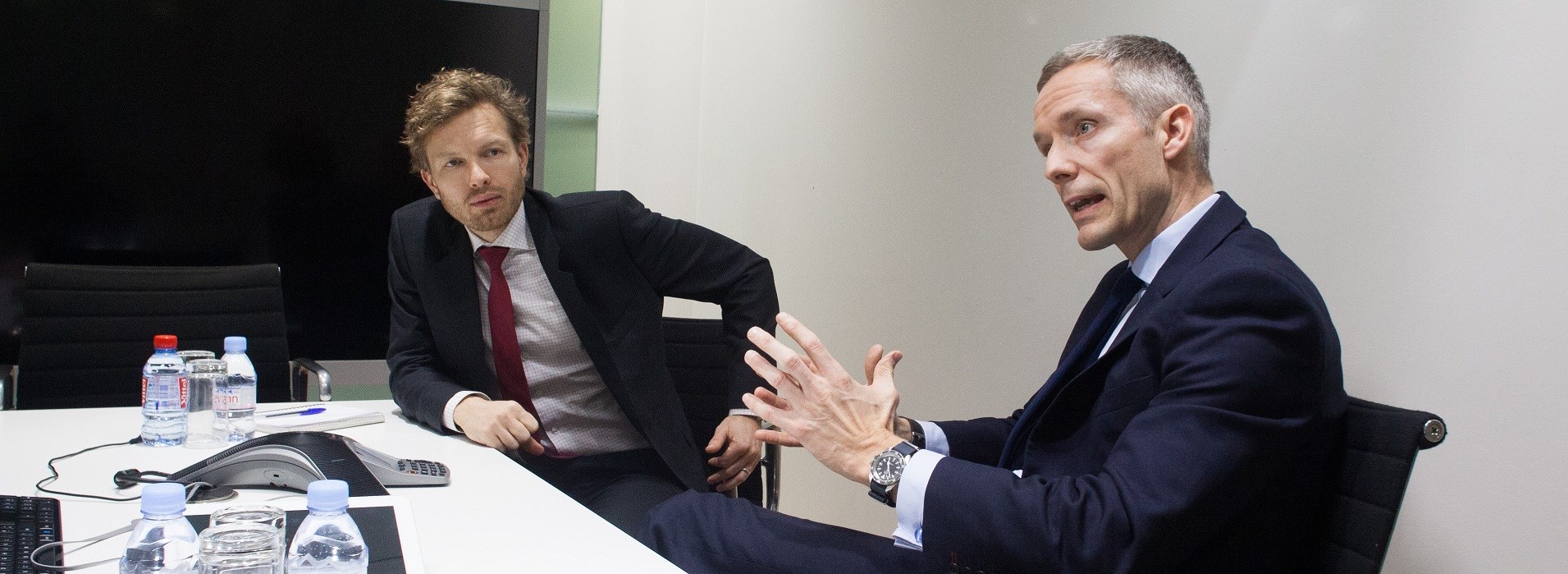
‘The answer to that is no. It has become much bigger than I imagined, for various reasons. The growth has been particularly great over the past five to seven years.'
14 years in the Fund
Johnsen and Sevang would not hesitate in recommending NBIM to new generations of NHH graduates. Sevang found it to be a major transition from Nordea.
‘It has been very different working in an institution that plays such a clear role in society and that is to manage our assets for future generations. I personally find it much more motivating to be part of something that big,’ says Sevang.
‘NBIM is a fantastic place to work,’ says Johnsen, who has been with the Fund for more than 14 years.
‘We have developed in many of the areas we work in and in dealing with the questions and challenges we encounter. We have worked to find the answer to a great number of interesting questions. It’s all about how we solve the task of managing the Fund in the best possible way, and if you’re interested in finance, it’s very exciting. We are at the forefront in many questions we need to consider. We have many skilled and sharp-minded people here who you can discuss management with, which is very rewarding,’ says Johnsen.
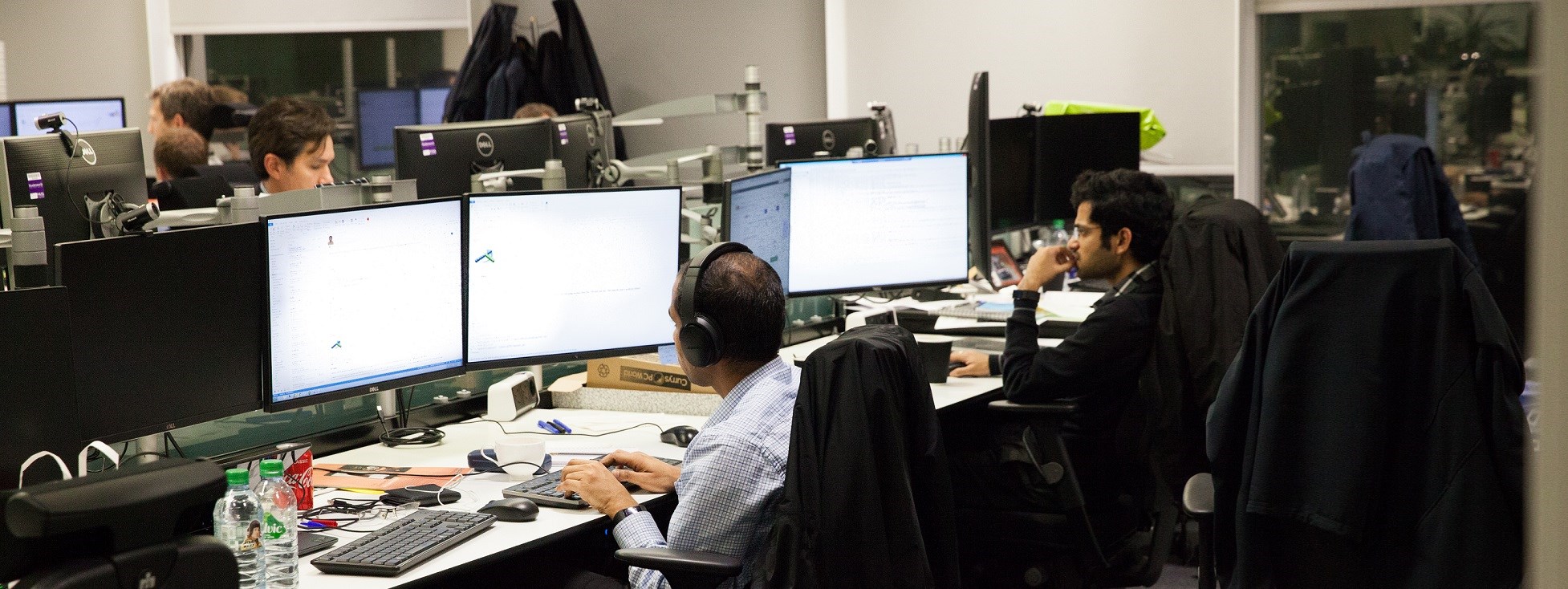
What constitutes a ‘normal’ day at work is not an easy question for Johnsen to answer, given his role as head of investments in the world’s biggest fund.
Do you have normal working days?
‘Yes, I suppose I do, depending on what you define as a normal day. But with management, it’s a bit... It’s a day at work, but it includes a responsibility that you really feel. You have a responsibility that is "live" all the time, so the definition of what a working day is and how long it can last is not set in stone.’